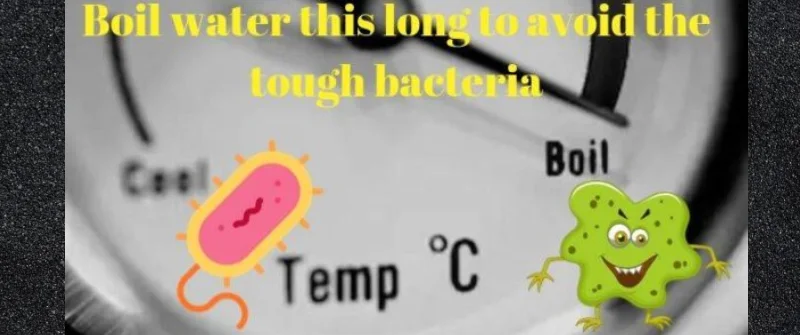Do you care about the health aspect of your drinking water? Contaminated water can cause diseases and sickness in your body hence affecting your health. Some people die as a result of consuming unclean water.
What’s more? You must assess the condition of your water before consumption. One of the simplest water purification methods is boiling it, but how long should it boil to kill pathogens?
To kill all bacteria, one must boil water for one minute according to the CDC. However, it must be boiled for at least 5 minutes to eliminate other pathogens.
Boiling for such long and at 100 degrees C is necessary to destroy the common bacteria and pathogens that are harmful to humans.
Also Read: 8 Factors to Consider Before Buying a Commode or Potty Chair
How Long to Boil Water to Kill Bacteria
Research done by the World Health Organization reveals that a water temperature of 70 degrees Celsius will kill 99.999% of bacteria, protozoa, and viruses in less than one minute. Water boils at 100 degrees Celsius. To make our point clear, by the time water reaches a rolling boil, it will be safe to drink.
Among other water purification methods, boiling is the most common and is effective in killing bacteria. The Centers for Disease Control (CDC) recommends boiling water for at least one minute to eliminate any doubt. Such an allowance is an extra margin for safety.
| Type of Pathogen | How long to boil to kill | Temperature needed |
| Giardia species | Time of boiling is 5 minutes | 55 degrees C |
| E.coli | 5 minutes | 60 degrees C |
| The time of boiling is 5 minutes | 3 minutes | 65 degrees C |
| Hepatitis A virus | One Minute | 98 degrees C |
| Enteric viruses | 20-40 minutes | 56-60 degrees C |
From the table, it is important to boil water for around 5 minutes to kill all the bacteria and pathogens that survive boiling water temperatures.
Does Boiling Water Make it Safe for Drinking?
You do not have to boil water for 10, 15, or 20 minutes for it to be safe to drink. Once your water reaches a rolling point, regardless of your altitude, it will be safe for your consumption.
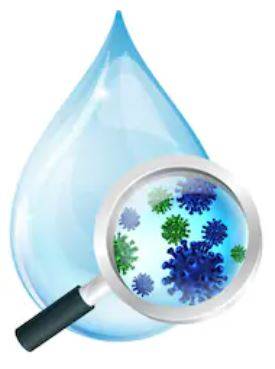
It is an assumption that no toxic chemicals or heavy metals like lead or pesticides are present. You can remove those contaminants with a water purifier or filter. For instance, you can remove chlorine and fluoride to purify water for drinking at home.
Boiling your water for an extra three minutes will help you enter into a margin of safety though it is not a must.
Varying Altitudes Affect Water’s Boiling Point
To take a recap from the point mentioned earlier on boiling point, 100 degrees as a boiling point is usually at sea level. The boiling temperature will change with the altitude. The trend is; that the higher you are above sea level, the lower the boiling point of water.
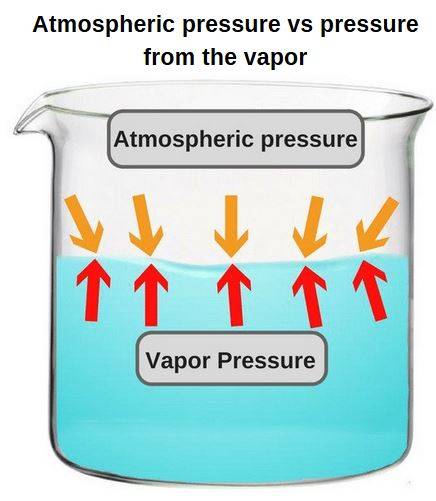
Take, for instance, at 10,000 feet; the boiling point will automatically reduce to 89.8 degrees Celsius. On the other hand, at the peak of Mt Everest, which is 29,029 feet, the boiling point is 70 degrees Celsius.
It is an indisputable fact that even the highest altitude on earth can bring the same water to a rolling boiling point to eliminate pathogens within a minute. To add a safety allowance, the CDC prefers that you heat water for three minutes, especially at altitudes above 6562 feet.
Also Read: 10 Best Bedside Commodes: potty chairs for seniors & handicapped
Why Should You Treat Water by Boiling
Well, boil water because it is effective to kill bacteria and organic impurities. As a rule of thumb, use clean water for your consumption to guarantee your wellness. There are several circumstances in which it may be necessary to treat water for use. Treatment of water removes or inactive pathogens.
Here are the reasons why you should treat your water:
- Inability to control measures. It may include lack or improper
disinfection or unsafe handling or storage. - Disasters or emergencies that result in inadequate sanitation, hygiene,
and protection of water sources. - Irregular quality of water, especially when traveling.
While one of the simplest methods of water treatment is through water boiling, the other methods that assist in water treatment are:
- Filtration
- Chemical disinfection
- Flocculation
Does Boiling Water Kill all Bacteria and Parasites
The bacteria, protozoans, and viruses are usually sensitive to inactivation at temperatures ranging below 100 degrees. The examination of thermal inactivation in water reveals that bacteria are sensitive to heat, and they die at temperatures above 56 degrees Celsius.
For the viruses, they get inactivated at temperatures of between 60 to 65 degrees Celsius. When you boil water to reach a rolling point, most of them die. You should then leave the water to cool naturally.

Also, you should clarify turbid water for aesthetic reasons before boiling. However, not all of them die, since we explored how the Clostridium bacteria can survive boiling water. Despite its survival, it does not cause harm to the human body.
The Bacteria and Viruses Removed by Boiling Water
Bacteria and viruses could be small organisms that you cannot see with a conventional microscope. You cannot see them with your naked eyes at the same time taste or smell them. The entrance of bacteria into our environment can be through various means including a leaking septic tank or water runoff from feedlots.
This organism can also enter the water supplies via open wells on the surface. Contamination does not discriminate against your location. Both city water and private wells are vulnerable.
Both animal and human digestive tracts have coliform bacteria. It is an undeniable fact that not all coliform bacteria are harmful. Interestingly, some bacteria in that classification can trigger serious illnesses such as intestinal infections and cholera.
E.coli is a bacteria that is responsible for food poisoning. It also survives in the water though it does not live long in such an environment. Its presences signal that there are other dangerous bacteria in your water. You can get an infection of E.coli via your water supply.
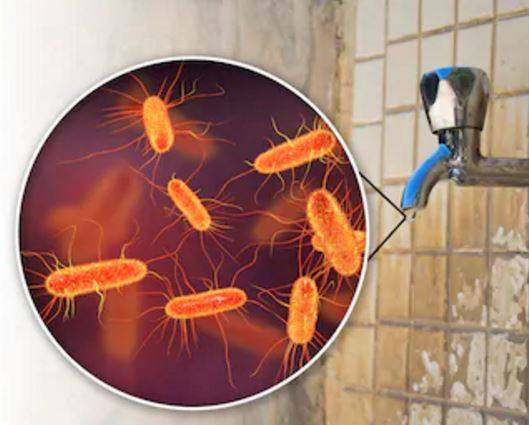
E.coli is a bacteria that is responsible for food poisoning. It also survives in the water though it does not live long in such an environment.
Its presences signal that there are other dangerous bacteria in your water. You can get an infection of E.coli via your water supply.
Also Read: 12 Best Bathtubs for Seniors & Walk-In Tubs for elderly shower
Symptoms of Bacterial Infections after Drinking Unboiled Water
Symptoms can differ depending on the type of infection. Bacterial infections can cause the following:
- Diarrhea
- Stomach cramps
- Vomiting
- Fever
The best way to ensure your water is safe is through adopting various water purification methods or installing a home drinking water filtration system. While boiling is effective in purifying water, other methods like decantation, filtration, and chlorination come in handy to guarantee safe drinking water.
How to Store Drinking Water after Boiling to Avoid Re-contamination
1. Copper Vessels and Steel Containers
Once you know the amount of water that your family consumes, you can store it in copper vessels and steel containers. The main advantage of such storage is that they do not contaminate your water. You have a guarantee that the vessels will store your water and remain safe for long-term use.
2. Bottles
Another effective way of storing water is putting it in bottles that you can easily use. Go for the bottles that consist of excellent material construction such as food-grade plastics. Glass bottles are ideal for storing water for regular use. Do not use regular plastic bottles as toxins could sweep through them and cause harm to the user.
3. Drums and gallons
If you store water in drums and gallons, make sure you use a clean pipe for the faucet. Ensure that the lid remains covered even when the tube is inserted into the drum to prevent contamination that comes from the air.
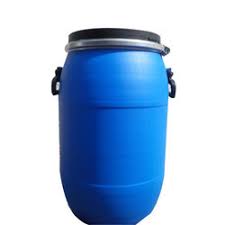
While using drums, take the following precautions;
- Fill the containers to the brim before closing the lid to prevent air
bubbles inside. - Keep your storage containers away from light or areas of too much use of
pesticides.
How Long Will Drinking Water Be Safe After Boiling
It will entirely depend on the type of water stored and how the water got stored. There is a boundary between the tap water and bottled water from commercial companies.
- Duration
The commercially available water has an expiration date. The shell life would be approximately one year if the manufacturer did not indicate the expiration date. Replace your water every six months, especially those that originate from your faucet or pumped municipal water.
- Storage containers
The storage containers will determine the length of time stored water to remain consumable. Store water in containers made from food-grade plastics or those containers designed specifically for storing water.
- Chlorine
Tap water from the municipal usually has chlorine that can keep it safe for six months. If you are filling your bottles with water from the well, add one or two drops of plain and unscented bleach to each cylinder.
- Storage
When storing water, the optimum temperature should be between normal room temperature to extend shelf life. On the other hand, freezing will help to last almost indefinitely.
Also Read: 12 Best Portable Bathtubs: Safe for Adults, Kids and Seniors
Conclusion
Water is an essential asset to all living things. Without water, life ends with most living organisms. The composition of the human body is 70% water. Water determines the health and the lifespan of any living creature. If you want to live long, make sure the condition of your water meets sanitary standards.
The state of your drinking water could procure or destroy your health. Scientists argue that untreated water contains harmful bacteria which can have diverse effects on the user when he consumes it.
The cheapest way to purify dirty water and kill the bacteria is through boiling to an optimum temperature. Boiling your cooking and drinking water will save your life. Boil your water to kill bacteria and prolong your life.

I am a homeowner excited by various innovative products and solutions that make life better. I am happy to share such ideas and reviews of home and related products.
